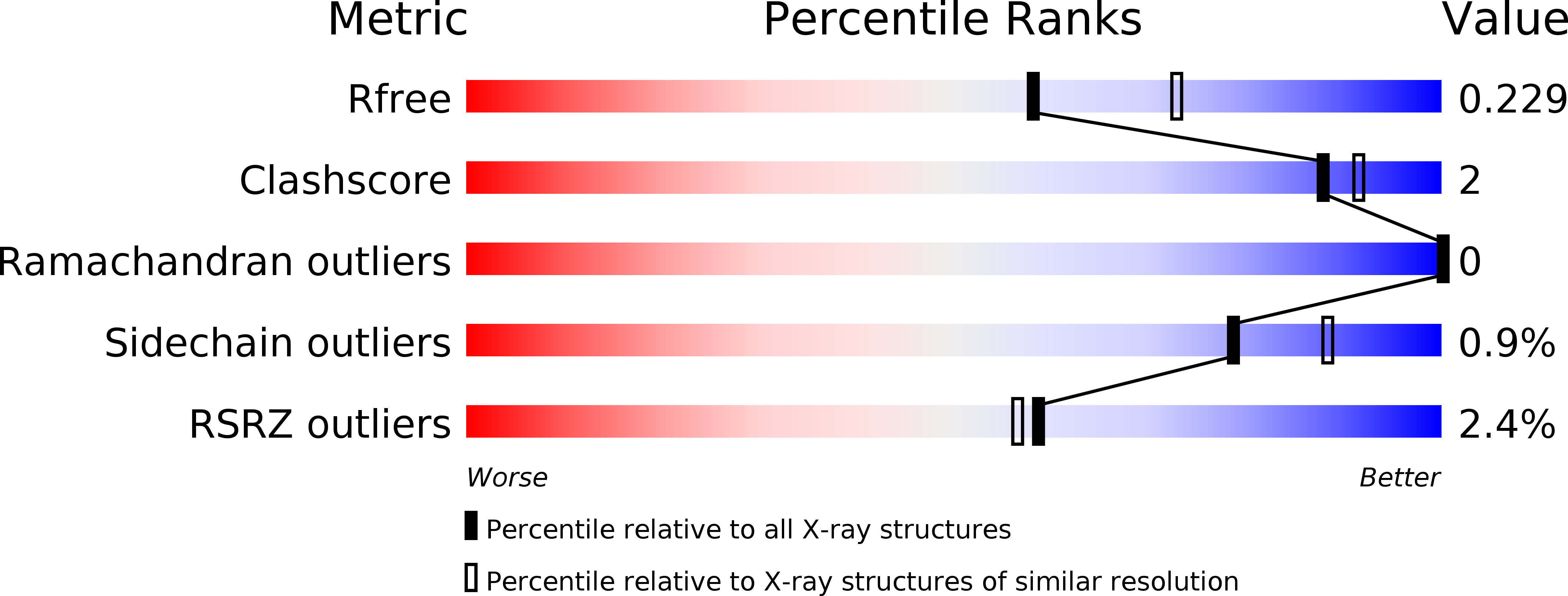Structural and functional characterization of the mumps virus phosphoprotein.
Cox, R., Green, T.J., Purushotham, S., Deivanayagam, C., Bedwell, G.J., Prevelige, P.E., Luo, M.(2013) J Virol 87: 7558-7568
- PubMed: 23637399
- DOI: https://doi.org/10.1128/JVI.00653-13
- Primary Citation of Related Structures:
4EIJ - PubMed Abstract:
The phosphoprotein (P) is virally encoded by the Rhabdoviridae and Paramyxoviridae in the order Mononegavirales. P is a self-associated oligomer and forms complexes with the large viral polymerase protein (L), the nucleocapsid protein (N), and the assembled nucleocapsid. P from different viruses has shown structural diversities even though their essential functions are the same. We systematically mapped the domains in mumps virus (MuV) P and investigated their interactions with nucleocapsid-like particles (NLPs). Similar to other P proteins, MuV P contains N-terminal, central, and C-terminal domains with flexible linkers between neighboring domains. By pulldown assays, we discovered that in addition to the previously proposed nucleocapsid binding domain (residues 343 to 391), the N-terminal region of MuV P (residues 1 to 194) could also bind NLPs. Further analysis of binding kinetics was conducted using surface plasmon resonance. This is the first observation that both the N- and C-terminal regions of a negative-strand RNA virus P are involved in binding the nucleocapsid. In addition, we defined the oligomerization domain (POD) of MuV P as residues 213 to 277 and determined its crystal structure. The tetrameric MuV POD is formed by one pair of long parallel α-helices with another pair in opposite orientation. Unlike the parallel orientation of each α-helix in the tetramer of Sendai virus POD, this represents a novel orientation of a POD where both the N- and the C-terminal domains are at either end of the tetramer. This is consistent with the observation that both the N- and the C-terminal domains are involved in binding the nucleocapsid.
Organizational Affiliation:
Department of Microbiology, University of Alabama at Birmingham, Birmingham, Alabama, USA.















